Hyundai Kona Electric review: the most sensible electric car, and the best
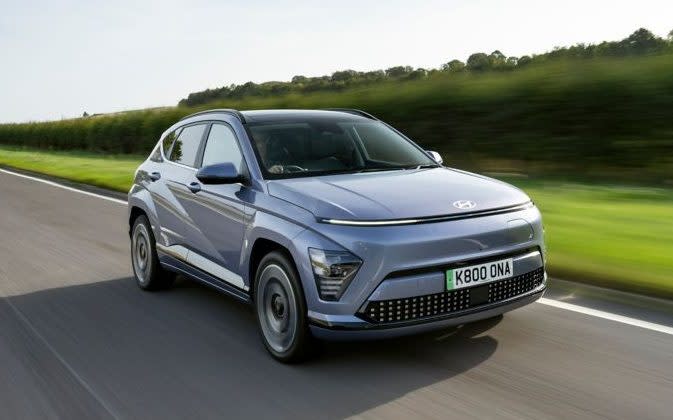
Sometimes, in this game, you have a pretty good idea that a car is going to be outstanding from the outset. Whether it’s because of the general excellence of its predecessor, a particularly eye-catching set of technical specifications, or perhaps just a sense that this is going to be a benchmark car, you’re primed and ready for brilliance – and disappointed if the car in question doesn’t live up to that expectation.
Sometimes, however, brilliance creeps up on you. Take the Hyundai Kona Electric. The first generation of this compact electric SUV was (behind its unusual looks) decent enough, if nothing to write home about.
What’s more, in hybrid form, this second-generation Kona earned itself a distinctly average three stars on our first encounter a few months back. However, as I say, sometimes brilliance creeps up on you. And as it turns out, the latest Kona Electric really is rather brilliant.
Pros
Smooth ride
Easy-to-use, spacious interior
Good range
Cons
So-so charging speeds
Stodgy handling
Some rivals are more affordable
Capacity crowd
As before, you get a choice of two battery sizes with the Kona Electric – though their usable capacities have increased from 39 and 64kWh to 48 and 65kWh respectively. As a result, the smaller-battery car is more useful than before, especially if you charge at home and rarely do longer distances; most buyers, however, will plump for the 65kWh model that undoubtedly makes more sense as an all-round choice.
This is still a relatively modest battery size, which keeps weight relatively reasonable, and the Kona still gets a decent 319-mile WLTP range out of it. As a rough rule of thumb, that should equate to between 220 and 250 miles in the real world.
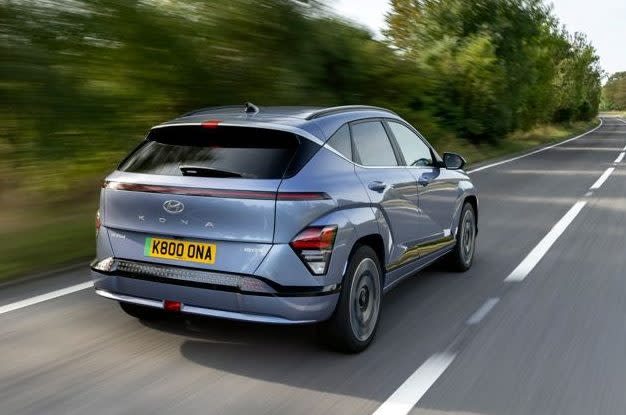
Disappointingly, you don’t get the blisteringly quick 800V charging architecture of the Kona’s bigger, more advanced stablemate, the Ioniq 5 – and consequently, charging speeds are a little disappointing, barely breaking the 100kW mark at their maximum. As a result, it’ll take a relatively tardy 41 minutes to get the Kona from 10 to 80 per cent on a public rapid charger.
At home, however, the modest battery size means the Kona will take less time to charge up than some other electric vehicles (EVs) – eight hours on a 7.4kW wall box will get you from 10 to 100 per cent.
Having said that, faster charging would push the Kona’s prices up, and this is a reasonably priced car as EVs go; £38,595 for the entry-level Advance with the 65kWh battery is not exactly cheap, but you do get a heat pump as standard on this and every Kona Electric, not to mention Hyundai’s five-year warranty, which means it’s competitively priced with similar rivals like the VW ID.3 and Renault Scenic E-Tech.
Sensible heads prevail
Indeed, scrutinise the equipment list and you’ll start to understand where Hyundai is going with this car. It’s a bit of a shame that you don’t get nice-to-have fripperies such as heated seats and ambient lighting as standard, but what you do get is the sensible stuff.
That heat pump, for example – some rivals make you pay more for one, while others don’t get one at all unless you spec the top model, and that’s important because it’s something that really does help to boost efficiency in winter.
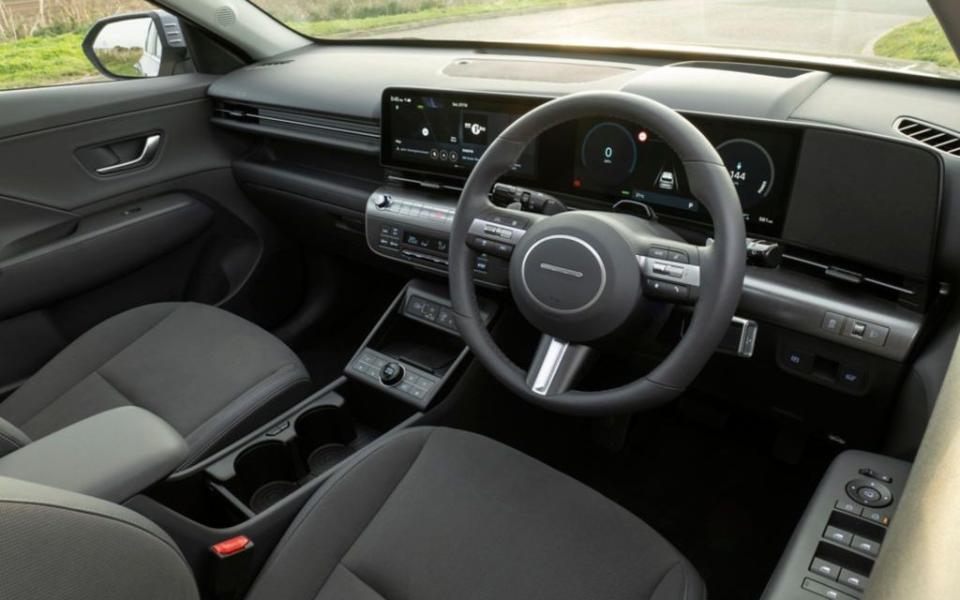
There’s also a spare three-pin charging cable for when you need to charge up somewhere that doesn’t have a wall box, something that many manufacturers don’t include as standard these days. And you get vehicle-to-load charging – i.e. a three-pin plug inside the car that you can use to charge up electrical accessories you might want to use while you’re out and about.
Of course, if you do want a few more toys, you can always upgrade to the sportier-looking N Line and N Line S versions – or there’s the fully loaded Ultimate model at the top of the range, which we’re testing here – yours for £43,095.
Oh, and every model gets a rear wiper – something you don’t get in the Kona’s big brother, the Hyundai Ioniq 5, nor a great many other EVs, for some reason. This, in other words, is a car that prioritises pragmatism and thoughtfulness; the straight-laced, sensible alternative to its glamorous, spangly siblings and rivals.
That’s a theme that continues elsewhere. In this day and age, you usually climb into a new car to find a scattering of buttons and a vast touchscreen that you’re forced to use to control everything else.
Not here, though. Hyundai has endowed the Kona with big, proper buttons that you can find at a glance. Better still, they’ve been grouped into sections to make them easy to use.
Buttons galore
There’s a layer for the climate control, below which sits the charging pad for your phone. Below this, another group of buttons control seat heating and other ancillaries, complete with a large, twiddlable switch that you can use to choose between Eco, Normal and Sport drive modes.
Above all of these sits the sensibly sized touchscreen, with its own row of physical shortcut buttons that make navigating its software relatively easy.
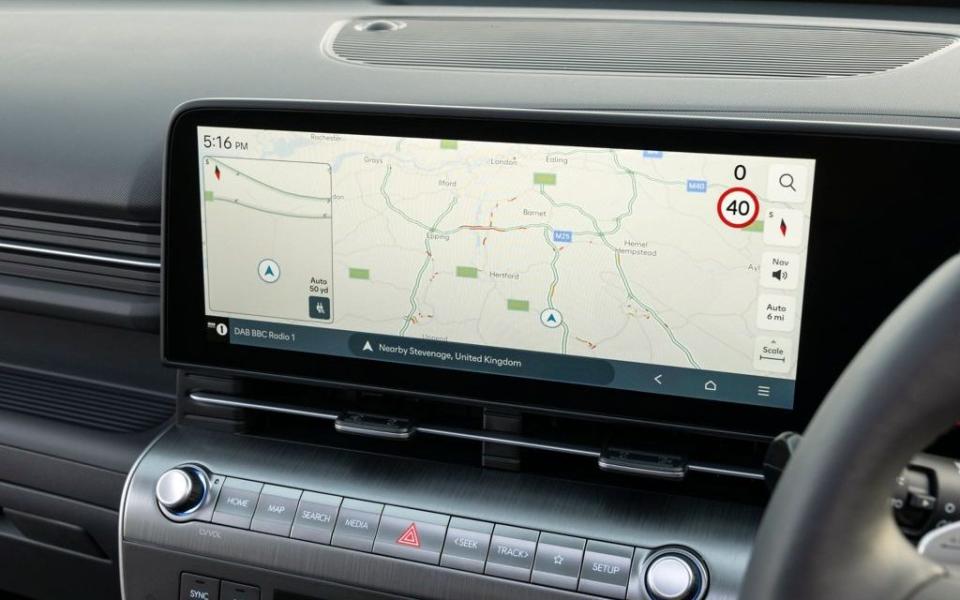
There’s another screen to its right, which displays all of your driving information in a clear and easy-to-understand way. Flick an indicator on at low speeds, and you’ll even find this gives you a camera view of the kerb and blind spot on that side of the car.
You’ll find more ancillaries – the ones you don’t need often – down by your right knee, and on the steering wheel, yet more lovely, physical buttons. Indeed, it seems Hyundai has completely eschewed the trend for touch-sensitive pads, which isn’t a particularly fashionable move, but does make the Kona one of the most user-friendly EVs.
What’s more, the buttons all feel nice to the touch; in fact, quality is high throughout, and while the dashboard plastics are almost uniformly grey, the design – complete with gunmetal-esque accents – means the whole thing doesn’t feel too dour.
There’s space aplenty, too. Up front there are more cubbies, trays, pockets and slots than you’ll know what to do with, and it’s easy to get comfortable thanks to the wide array of seat adjustment.
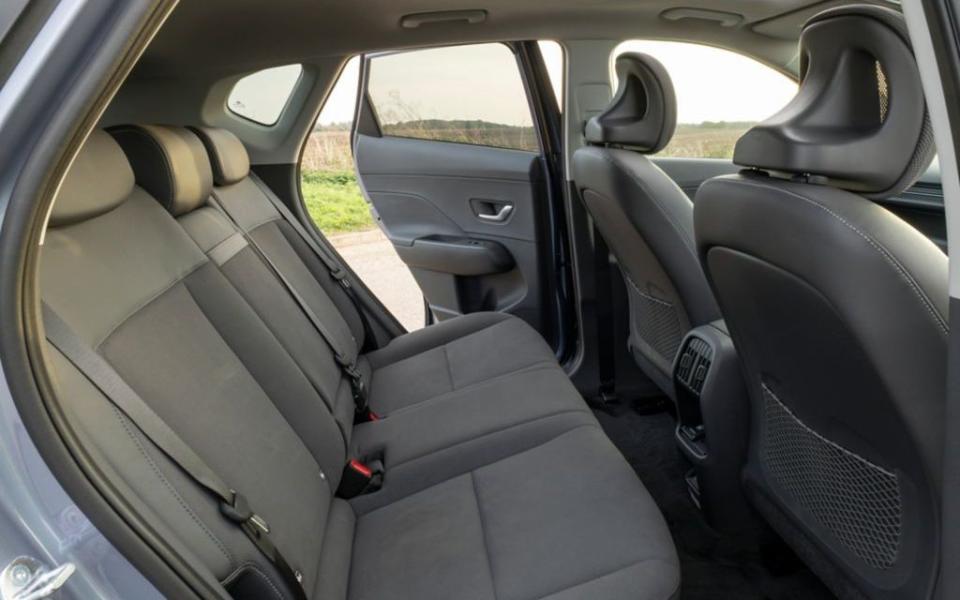
In the back, meanwhile, there’s far more leg room than you might expect in a car that’s this compact – don’t forget that the Kona is only 4.35m (14ft 4in) long, so is a similar size to the Renault Megane E-Tech and Citroën ë-C4. The boot, meanwhile, comes in at 466 litres, making it bigger than either of those rivals’, and almost on par with the larger Nissan Qashqai. Sadly, you don’t get the sliding seats of the Ioniq 5, which would add a bit of welcome versatility. For all that, though, this is still a deeply sensible – and useful – family car.
Soft scoop
That theme of head-over-heart continues when you get the Kona out on the road. Let’s face it: the main priority of a family SUV like this one should really be comfort, rather than driving thrills. And that’s what Hyundai clearly thinks, too.
On a twisting back road, the soft suspension allows the body to slop over just a bit too much for comfort, the steering is remote, and there’s an overriding sense that the car doesn’t really like being thrown around too much.
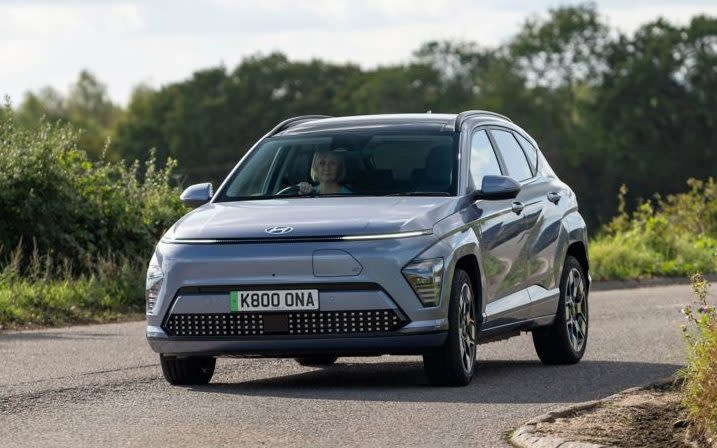
For all that, though, it does change direction pretty well, with the front end biting neatly and following the line you pick for it.
And of course, the pay-off for this rather unexciting handling is that this is one of the smoothest and most comfortable electric cars out there. It’s almost too soft, in fact – over really fast crests, you can feel the tail of the car rocking slightly as if the damping can’t quite keep up.
You’ll only really notice if you’re driving like a boy racer (or a motoring journalist), though. Which, if you’re buying one of these cars, you most likely won’t be. And the rest of the time, that smooth suspension means bumps are smothered beautifully, and larger undulations taken in stride.
Not even rougher, sharper ridges cause much of a kerfuffle, which is impressive given the 19in wheels of this top-spec Ultimate model. The Advance should be even plusher with its 17in wheels and plumper tyres, and you can spec these as a no-cost option on the top model too, if you want. Either way, whichever Kona you get, you’ll find it’s pretty much the electric car equivalent of a big, cushy sofa.
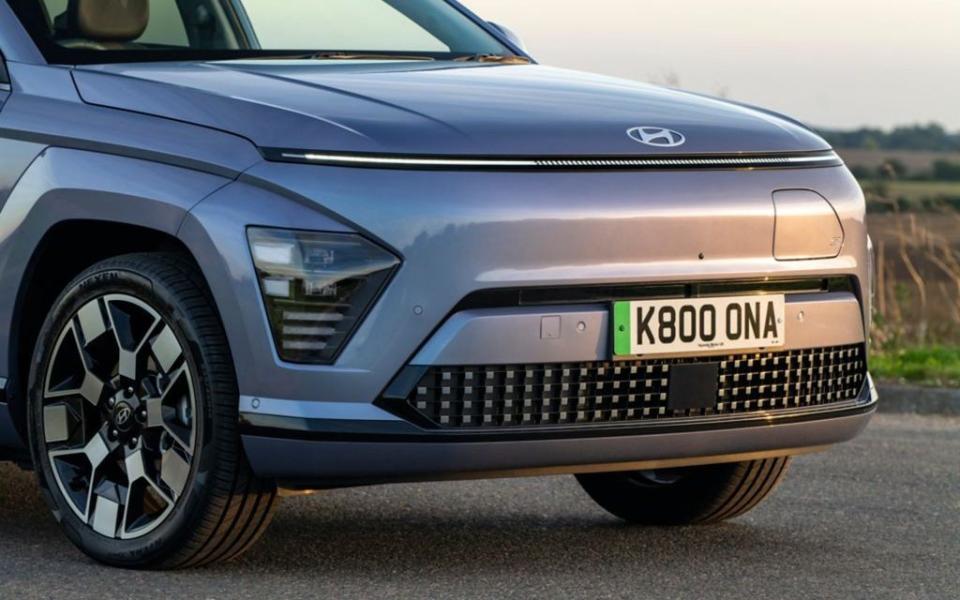
It’s not even ridiculously fast. But again, that doesn’t actually matter. There’s plenty of get-up-and-go, but the Kona Electric doesn’t attempt to remove your wisdom teeth with sheer pace, but who needs weapons-grade performance in a car like this? Instead, Hyundai has spent time finessing the controls, so the brake pedal feels natural and the throttle progressive – once again, making this a particularly easy EV to drive.
The Telegraph verdict
As we discussed at the start, then, the thing about the Kona Electric is that its brilliance doesn’t slap you in the face from the get-go. You don’t climb into it and feel your life is immediately changed for the better.
But the longer you spend with it, the more you realise just how well conceived it is; how much those who developed it really thought about how its end user will use it, and what they really need, paying attention to the little things that make the daily grind just that little bit less wearisome: sensibly laid-out controls, easy driving dynamics, cushy ride comfort, neat little spaces for odds and ends.
That is the mark of a brilliant car; not one that impresses you with glitzy features that turn out to be a waste of space, but one that instead hits its brief relentlessly well.
With a couple of minor exceptions, the Kona Electric does exactly that. It’s quiet, comfortable, roomy, easy to use, has a decent range, doesn’t cost the earth and even comes with a good, solid warranty to back it up. See? Sometimes, brilliance really does creep up on you.
The facts
On test: Hyundai Kona Electric 65kWh Ultimate
Body style: Five-door SUV
On sale: now
How much? £43,095 on the road (range from £38,595)
How fast? 107mph, 0-62mph in 7.8sec
How economical? 3.7/4.2 mpkWh (19in/17in wheels; WLTP Combined)
Engine & gearbox: N/A
Electric powertrain: AC permanent magnet synchronous motor with 65kWh (usable) battery, 100kW on-board charger, Type 2/CCS charging socket
Electric range: 319 miles (WLTP Combined)
Maximum power/torque: 213bhp/188lb ft
CO2 emissions: 0g/km (tailpipe), 26g/km (well-to-wheel)
VED: £0
Warranty: 5 years / unlimited miles
Spare wheel as standard: No (not available)
The rivals
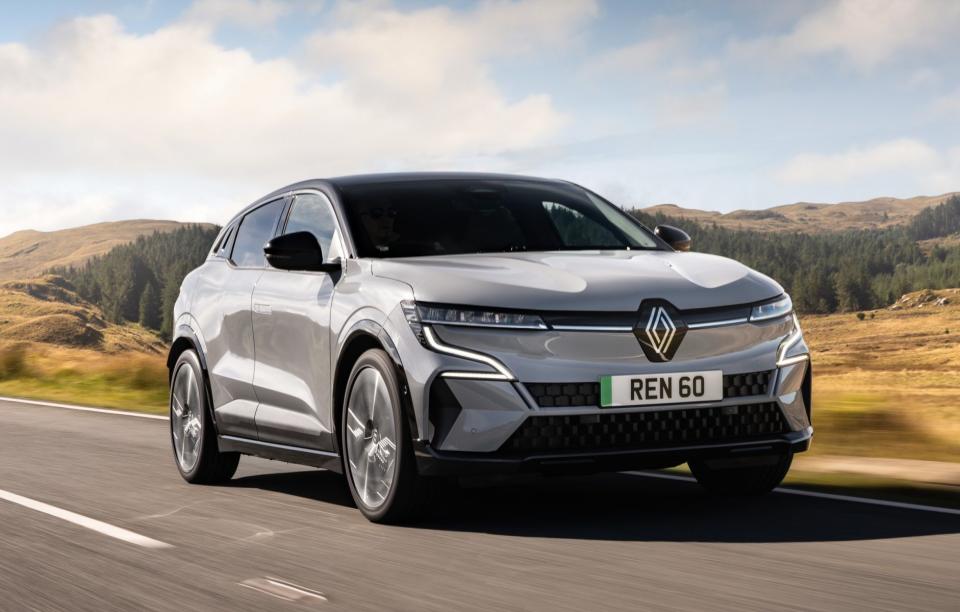
Renault Megane E-Tech Iconic
217bhp, 280 miles, £37,995 on the road
Now that it’s finally been given the heat pump it always needed, and received some hefty price cuts, the Megane E-Tech is a much more palatable proposition than ever before. While the ride is so-so on the whopping 20in wheels, it handles properly, and comes with a beautifully finished interior. Granted, it gets fewer toys, less range and less space than the Hyundai – but you might forgive it, given the £5,000 price difference.
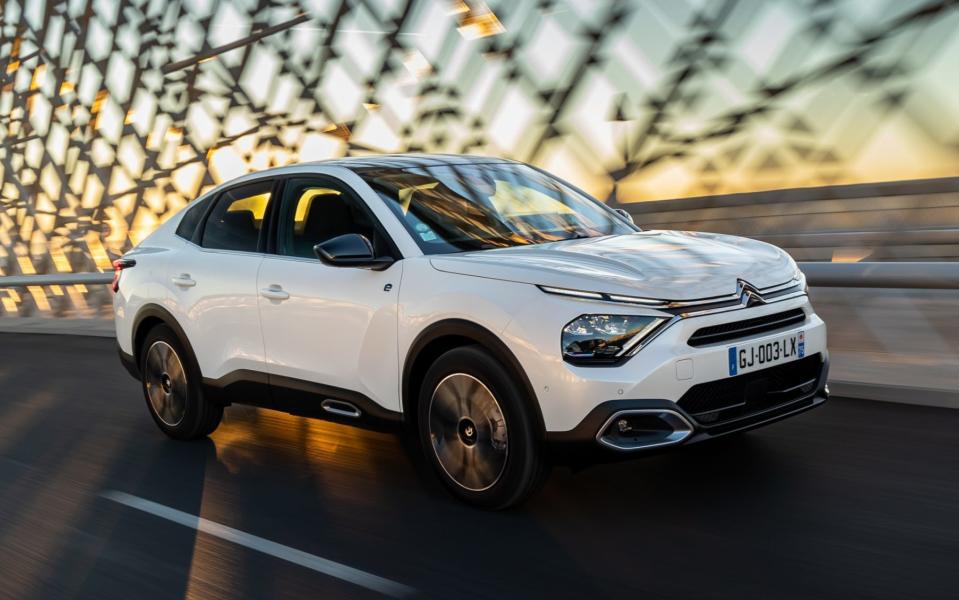
Citroën ë-C4 ë-series 54kWh
154bhp, 259 miles, £37,410 on the road
The ë-C4 is, like the Kona, one of the comfiest EVs around, but it’s starting to fall behind the best rivals now, with charging speeds and range and power figures that aren’t up with the best in class. Inside, it’s roomy but a bit plasticky in places, which would be forgivable but for the fact that it looks quite pricey for what it is at the moment.
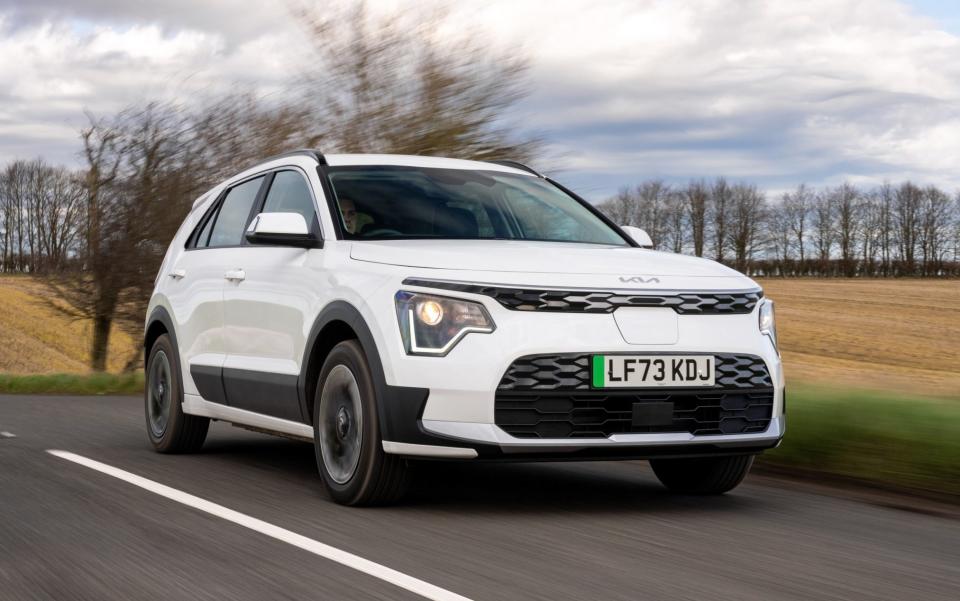
Kia Niro EV 4 64.8kWh LRHP
201bhp, 285 miles, £43,225 on the road
The Kona’s electric cousin, the Niro, shares with it a battery pack – but it’s down on both power and range, despite costing more. The flipside is that it’s a larger car with a bigger boot, and you do get a longer warranty, but even so, the Kona looks like the better buy.

 Yahoo News
Yahoo News 